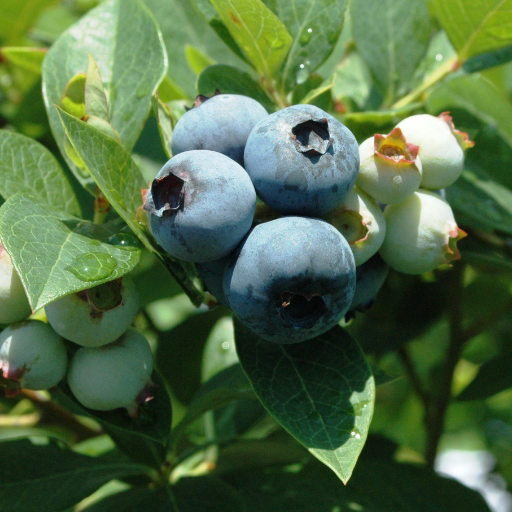
NC E-IPM
@NC_EIPM
Followers
374
Following
395
Media
140
Statuses
2K
Supports Extension, Research, and Education related to IPM in NC
Raleigh
Joined April 2014
Flyspeck (black pinhead sized spots) and sooty blotch (dark charcoal-like smudges) of apple (FSSB) are cosmetic diseases of apple fruit that can cause downgraded fruit quality or leave fruit unsaleable. FSSB is caused by a complex of multiple fungal species. #fungalfriday
0
0
0
Woolly mullein is a biennial weed in NC. In the first year it produces a rosette; the following, it produces a stalk with small densely grouped yellow flowers. It is a hairy plant that can grow to 6 feet or more in height. It prefers disturbed sites in full sun #weedwednesday
0
0
0
Northern fowl mites (NFM) are an external parasite of poultry and other wild birds. Presence can be indicated by black greasy patches of feathers. High infestations cause anemia, lower egg production and death. The NFM will also bite people and cause itching #naughtybugmonday
0
0
0
Symptoms of Daylily Leaf Streak aureobasidium microstictum, include yellowing along the central leaf vein followed by browning, and reddish-brown spots. The damaged areas may join together and spread along the leaf in streaks, and infected leaves may eventually die #fungalfriday
0
0
0
Asiastic Hawksbeard is an invasive summer annual. Its leaves occur in basil rosettes and has hairy stems/foliage. The yellow flowers are dandelion-like but much smaller in size and usually present in March. The flowering stalk may emit a milky sap when torn. #weedwednesday ish
0
0
0
Cigarette beetle adults and larvae are pests of stored commodities; spices, rice, ginger, raisins, pepper, seeds, and dried flowers. The adults are small, oval, and reddish brown with saw-like antennae. Larvae are creamy white worm-like with a yellow head #naughtybugmonday #late
0
0
0
Common chickweed is low growing prostrate winter annual. Its leaves are bright pale green, tear-shaped, and attached to the stem on opposite sides by a slender stalk. In contrast, mouseear chickweed is covered with hairs and is dark green in color #weedwednesday
0
0
0
Oak, cherry, hackberry, and willow trees are the preferred host of the whitemarked tussock moth. The larvae has two "black pencils" of setae (spines), four white satae clumps as well as two red bumps. Setae can contain urticating material that causes dermatitis #naughtybugtuesday
0
0
0
Isariopsis leaf spot pseudocercospora vitis, is characterized by large, dull red to brown irregular-shaped spots on grapes that turn black and brittle with age. Cultural practices that increase air circulation such as shoot positioning and thinning aid in management #fungalfriday
0
0
1
Three-corner jack is a herbaceous annual noxious weed with round, ridged, reddish, often sprawling stems. Leaves are alternate, smooth, egg-shaped with slightly wavy margins. It has larger spiny fruits, smaller leaves, and more prostrate growth than devil’s thorn. #weedwednesday
0
0
0
The hickory shuckworm is a minor pecan pest that cause poor kernel development, shuck sticking, scarring and discoloring and delayed nut maturity occur from shuck mining activity of larvae after shell hardening. #dontbugmemondays
0
0
0
Red Thread is usually a cool-wet weather disease that causes circular or irregular-shaped patches of grass to die. It usually develops from the tip down and is characterized by the reddish mycelium that radiate from the tips of dead leaves under high humidity. #fungalfriday
0
0
0
Alligatorweed has white clover-like flowers that bloom during the summer. It typically grows in floating mats along the water’s edge although it will also grow emersed and even terrestrially. The leaves are opposite, lance shaped with a distinct midrib. #weedwednesday
0
0
0
Granulate cutworms are brown with yellow-gray lateral stripes running down each side. It can cause symmetrical feeding damage (leaves folded at night) and defoliation on peanut leaves in June and August. Cutworms are curled up under organic matter during the day #dontbugmemondays
0
0
0
Pecan Scab cladosporium caryigenum, is one of the most destructive diseases of pecan trees. Lesions are small, olivaceous-to-black spots, with a velvety or rough appearance when the fungus is sporulating. Lesions may coalesce and become large and irregularly shaped. #fungalfriday
0
0
14
Two of the common winter annual buttercups found in the state are hairy (mountains) and bulbous (coastal). Both are found in piedmont. Leaves are attached to long petioles, palmately three-lobed. Bulbous has a swelling at the base of the stem (resembles a turnip). #weedwednesday
0
0
0
The mexican bean beetle is copper red and dome-shaped. Each wing cover has eight small black spots that form three rows across the body when wings are at rest. These beetles skeletonize leaves which become lace-like and eventually turn brown from their feeding. #dontbugmemondays
0
0
1
Aphanomyces root rot is commonly found in poorly drained alfalfa fields. Infected stunted seedlings develop yellow cotyledons followed by chlorosis of other leaflets (similar symptoms to N deficiency). Roots and stems appear gray and water-soaked, then turn brown. #fungalfriday
0
0
1

































